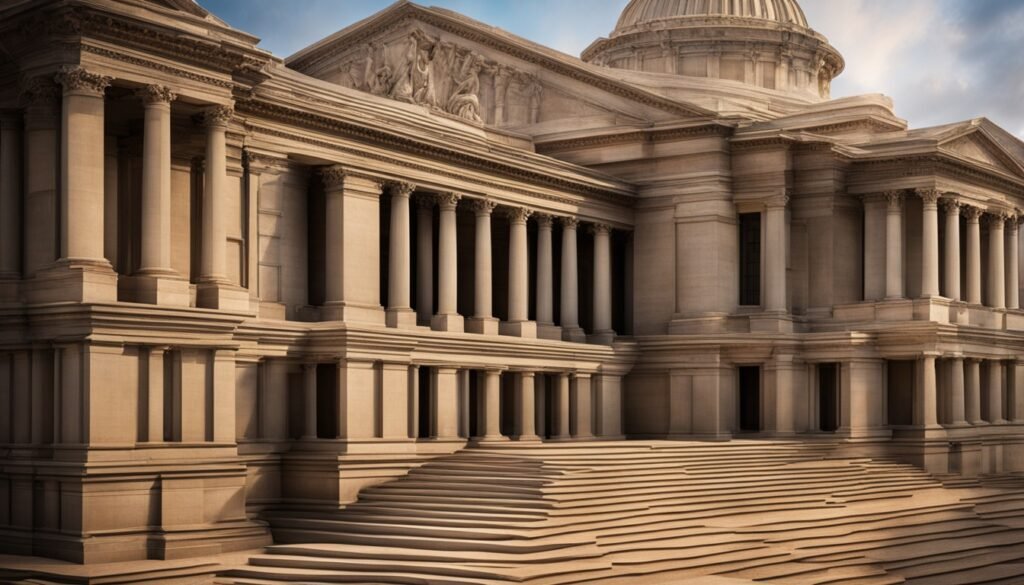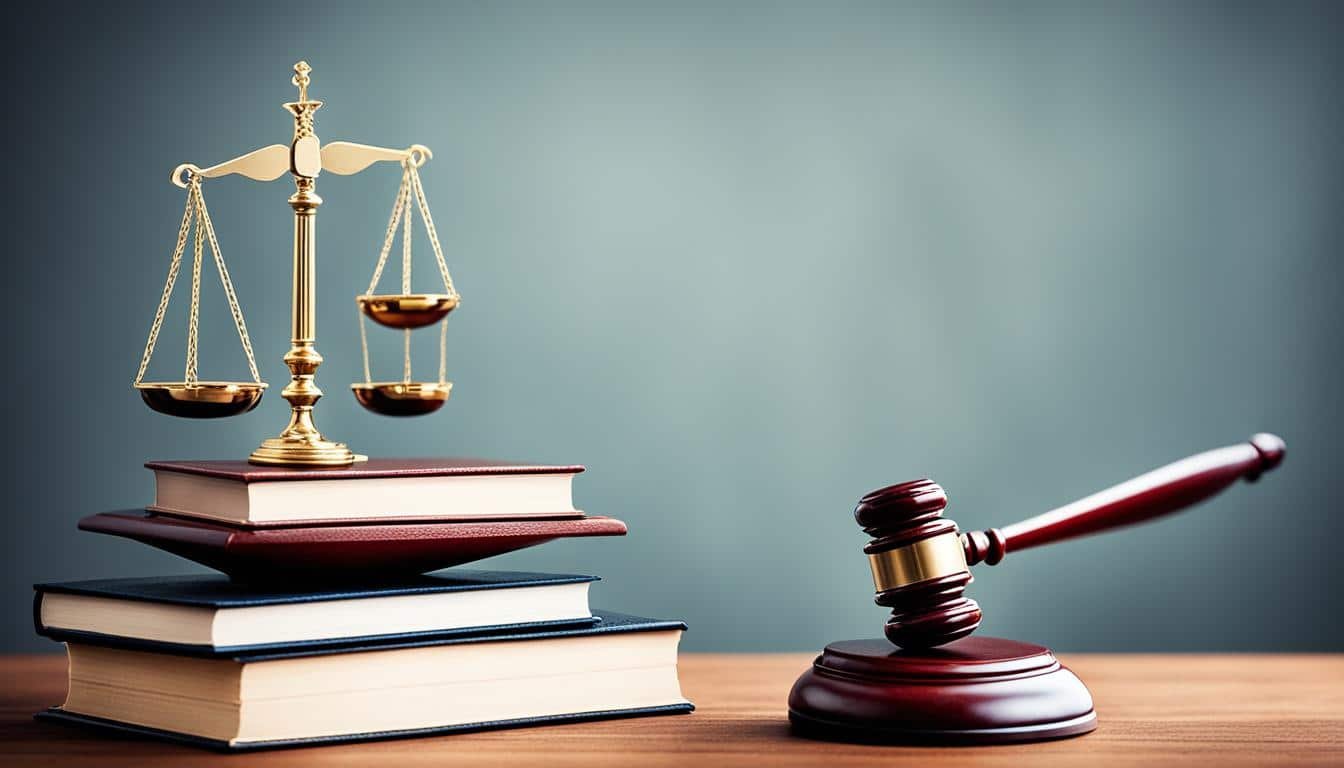The U.S. legal system deeply values legal precedent. It’s crucial in how courts make decisions. This system stands on the doctrine of stare decisis. This Latin term means “to stand by things decided.” It tells courts to follow past decisions unless those decisions are “flatly absurd or unjust.” Without this, judges could make whatever choices they wanted or laws would need to cover every possibility, which isn’t practical.
Also Read: Legal Rights In The Digital Age: Privacy And Data Protection
Legal precedent is hugely important, guiding judges, lawyers, and the public. It brings certainty and consistency to how laws are interpreted and applied. By staying true to case law and the common law method, the system remains stable. This system is key in common law systems where court decisions shape legal traditions.
Still, legal precedent has its challenges. Courts try to be stable and fair while sometimes needing to adjust for new situations. The idea of persuasive precedent lets courts look at decisions from other places or lower courts. This can complicate decision-making. Courts also have the power to change or set aside previous rulings in special cases. This keeps the law from becoming outdated.
So, the use of legal precedent isn’t easy. It requires a careful balance. Courts must balance following past decisions against dealing with new issues and changes in society. By doing this, the legal system tries to be fair and consistent while being able to update itself to meet modern needs.
Key Takeaways
- The doctrine of stare decisis requires courts to adhere to past judicial decisions, unless they are deemed “flatly absurd or unjust.”
- Legal precedent promotes stability and predictability in the legal system, ensuring the consistent interpretation and application of laws over time.
- Courts must balance the need for stability with the flexibility to adapt the law to changing societal circumstances, which can involve overturning or distinguishing prior decisions.
- The concept of persuasive precedent allows courts to consider decisions from other jurisdictions or lower courts, adding nuance to the judicial decision-making process.
- The role of legal precedent is crucial in common law legal systems, where judicial decisions play a significant role in shaping the jurisprudence.
Introduction to Legal Precedent
The idea of legal precedent is fundamental in the common law system. Here, past judicial decisions largely define how we understand and apply laws today. A key part is the concept of stare decisis, which means to “stand by decided matters.” It tells us that courts should stick to earlier decisions, unless they have a good reason not to.
Also Read: The Litigation Process: From Filing To Verdict
Definition and Origins of Stare Decisis
The doctrine of stare decisis guides the common law system. It says that courts must follow their own past decisions and those of higher courts. This rule isn’t fixed and courts can change it. But, they usually stick to previous decisions unless they find them wrong or outdated.
Relationship between Precedent and Common Law
Stare decisis is closely linked with the common law. Decisions made by judges form the foundation of the law. These decisions also set legal precedents. By following precedents, the system makes the law more stable and fair. It also ensures that laws can change with society while having a clear starting point.
Making use of legal precedents keeps the law steady and easy to predict. This steady growth is thanks to building on previous cases. The pre-existing framework of laws helps judges make better decisions. So, the connection between precedent and law is both active and beneficial for everyone.
| Key Aspects of Legal Precedent | Description |
|---|---|
| Definition of Stare Decisis | The principle that courts must generally follow the rule of law established in earlier cases, unless the original rule was erroneous or no longer sound. |
| Relationship to Common Law | Precedent is a cornerstone of the common law system, where judicial decisions shape the development and application of the law over time. |
| Importance of Consistency | Adherence to precedent promotes stability, predictability, and equal treatment under the law, as courts apply consistent legal principles. |
| Flexibility in Exceptional Cases | Courts may depart from precedent in limited circumstances where the original rule is deemed clearly erroneous or no longer applicable. |
Types of Precedents

In the legal system, two types of precedents are key for making decisions in court. These are binding precedent and persuasive precedent.
Also Read: What Are The Key Components Of Effective Career Education Systems?
Binding Precedent
Binding precedent requires lower courts to follow decisions of courts above them in the same system. These decisions are seen as law and must be followed. They are made by higher courts, like the Supreme Court. They form a top-down system, where lower courts cannot overrule those above them.
Persuasive Precedent
Persuasive precedent, on the other hand, is not mandatory for courts to follow. It’s made by courts not above the one making the current decision. This includes courts from other areas or lower courts in the same area. Even though not binding, these can be persuasive and sometimes become law if courts often refer to them.
It’s important for lawyers to bring up persuasive precedents to show important legal points and back up their case.
Legal Precedent in Practice

Legal precedent guides how courts make decisions, but it’s not always set in stone. While courts often stick to the law made in past cases, they can choose not to. This is thanks to the stare decisis rule, which says they must usually follow what higher courts have decided before. But sometimes, they can make different choices. This helps keep the legal system adaptable.
Also Read: Comparative Jurisdiction: How Different Systems Operate
When to Follow or Depart from Precedent
Judges usually follow the rules set by previous cases. But if they find these rules to be really wrong or unfair, they can decide differently. This keeps the law from becoming too unyielding. It means the legal system stays fair and open to new ideas.
Overturning or Distinguishing Prior Decisions
Sometimes a court might decide not to follow a previous decision at all. This is called overturning the decision. Then a new rule is set. If they see the new case is very different from the old ones, a court might distinguish the decisions instead. This helps keep the system flexible. It makes sure the law works for different situations.
Though, there are limits to using or ignoring old cases. Lower courts must follow the rules set by higher courts in their path. Different courts may look at what other places have decided, but they don’t have to follow those choices. Judges have to balance sticking to old rules with making the law fit each case new.
| When to Follow Precedent | When to Depart from Precedent |
|---|---|
|
|
Importance of Legal Precedent

The doctrine of stare decisis, which says courts must follow past decisions, is key in the common law legal system in the United States. It makes sure laws are used the same way every time. This is important for keeping stability and consistency in the legal system.
Also Read: The Foundation Of Democracy: Understanding The Constitution
Promoting Stability and Consistency
The principle of stare decisis keeps the legal system steady and organized. Courts must stick to the laws set in earlier cases. This ensures that everyone sees the law applied in the same way.
Judges don’t act based on their own feelings. Instead, they use old decisions to guide them. This makes the law fair for everyone, no matter who is judging their case.
Ensuring Equal Treatment under the Law
The doctrine of stare decisis makes sure everyone is treated the same in court, no matter the judge. Courts follow old decisions to avoid unfair or random rulings. This upholds the fundamental tenet of the rule of law, which states that everyone should face the law equally.
| Benefit | Description |
|---|---|
| Stability and Consistency | The doctrine of stare decisis makes the legal system steady and reliable by making courts follow old precedents and laws. |
| Equal Treatment under the Law | Following old decisions helps ensure everyone is treated fairly, regardless of the judge. Courts must stick to past rulings. |
| Predictability | Stare decisis makes the law more predictable. This helps people and companies plan and make smart choices. |
| Judicial Efficiency | The principle of stare decisis eases the work of courts. They don’t have to review old cases all over again each time. |
Legal Precedent

The American legal system is built on precedent. This means the outcome in one case can affect future cases. This system is known as stare decisis, which is Latin for “to stand by things decided.” It keeps the law consistent and not easily changed by single decisions.
Hierarchy of Courts and Precedential Authority
In the justice system, higher court decisions are more important than those from lower courts. In the U.S., the Supreme Court is at the top. Then come the Courts of Appeal and finally the District Courts. Supreme Court decisions are the ultimate law, even above other courts.
Lower courts must follow what the higher courts have decided. For example, a District Court has to use the Court of Appeal’s decisions that cover its area. Yet, higher courts can choose not to follow what lower courts decided.
This system helps keep the law fair for everyone. It makes sure decisions stay the same and aren’t up to just one judge’s opinion.
| Court | Precedential Authority |
|---|---|
| Supreme Court | Highest law of the land, binding on all lower federal and state courts |
| Courts of Appeal | Binding on all District Courts within their jurisdiction, but not on the Supreme Court or other Courts of Appeal |
| District Courts | Bound to follow the precedents set by the Court of Appeals that has jurisdiction over their decisions, but not binding on higher courts |
| State Courts | Bound by the precedents set by the state’s highest court, but not by federal court decisions unless they involve federal law |
The court system’s layout and rules on precedent are vital for fair law use. They help make sure the law is applied evenly across the nation.
Criticisms and Debates around Precedent
The legal system greatly values the rule of stare decisis for its role in keeping things stable and reliable. However, it’s not without its critics and ongoing debate. Many argue that sticking strictly to past judicial decisions can block needed change. This leads to a concern about the principle’s rigidity and resistance to change.
Rigidity and Resistance to Change
Some experts say using stare decisis too strictly can make it hard for the courts in the United States to change with the times. They feel Chief Justice John G. Roberts Jr. and Justice Samuel Alito also worry about how hard it is to break from tradition. This happens, even when the court thinks the old decisions are not the best for today’s world.
Looking at the New York Times and the famous case Roe v. Wade, some experts argue that stare decisis achieves a state of “resistance to change” and a hesitance to change what’s already decided. This is true even if the facts in an adjudged case feel out of step with current social values or truths.
Those who want more flexibility in legal decision-making believe that courts should hold by precedent when it’s still right. But, they also should have the power to break from it. This would help them deal with new problems or fit with changing conditions.
Lately, some thinkers are looking into applying network theory to legal precedent. This approach suggests that the common law systems and legal practice could do better with a more open and changing view on judicial decision-making. Attorney Michael Trotter sees the rigidity of stare decisis leading to more laws being written down.
This back and forth between stability and consistency and flexibility and responsiveness in the legal system is a key issue. As the law and the courts face this challenge, the place of legal precedent will keep being a big point of discussion and study.
Evolving Nature of Precedent
The law changes as society does. So, courts face a tough job. They have to keep laws steady, yet update them to fit today’s world. This is how legal precedent, or previous court decisions, adapts over time.
Adapting to Societal Changes
When society moves forward, legal problems might pop up that are new. Courts might need to look at old rulings again. They could even decide to change them. This keeps the law in step with what’s happening now.
Balancing Stability and Flexibility
A steady legal system is important for everyone. The rule of stare decisis says that courts should stick to what they’ve decided before. It’s about being fair and predictable.
Figuring out how to stick to old rulings while also staying current is tricky. But, it’s a challenge that the law community is always working on.
With the world always changing, how the law uses old decisions will keep being talked about. This debate is part of what makes law things kept up to date with the world.
FAQs
Q: What is the role of legal precedent in judicial decision-making?
A: Legal precedent refers to the past decisions made by higher courts that serve as a guide for future cases. Judges often look at precedent to make consistent and fair decisions based on established principles of law.
Q: How does case law influence judicial decision-making?
A: Case law, which is based on legal precedent, provides a detailed set of facts and the disposition of a particular legal case. Judges use case law to analyze the facts and legal reasoning of previous cases to determine how the law should be applied in similar situations.
Q: What is the significance of precedent set by higher courts?
A: Precedent set by higher courts is binding on lower courts within the same jurisdiction. This means that lower courts must follow the legal principles established in previous decisions unless there is a compelling reason to deviate.
Q: Can a legal precedent from another jurisdiction be persuasive authority?
A: Yes, a legal precedent from another jurisdiction can be persuasive authority for a court to consider when making a decision. While not binding, persuasive authority can influence a judge’s interpretation of the law.
Q: What happens if a subsequent case conflicts with an existing precedent?
A: When a subsequent case conflicts with an existing precedent, a court may choose to distinguish the facts or legal reasoning of the cases in order to justify reaching a different conclusion. This process helps courts adapt legal principles to evolving societal norms.
Q: Does a precedent case always govern the outcome of future cases?
A: No, precedent is not always binding and may be distinguished or overruled in certain circumstances. Courts have the flexibility to depart from precedent when it is necessary to address new legal issues or correct past errors.
Q: What is a case of first impression in the context of legal precedent?
A: A case of first impression refers to a legal issue that has not been addressed by previous court decisions. In such cases, judges must rely on statutory interpretation, legal principles, and policy considerations to establish a new precedent.
Source Links
- https://www.law.cornell.edu/wex/precedent
- https://legal.thomsonreuters.com/blog/what-is-a-legal-precedent-definition-and-case-law-resources/
- https://digitalcommons.law.villanova.edu/cgi/viewcontent.cgi?article=1425&context=vlr





